If you are a fan of Japanese food culture, you may hear about sake somewhere. However, apart from sake, there are some different kinds of traditional alcoholic that is very unique to Japan. Today, we want to introduce shochu (焼酎). Let’s find out what is so special behind its history and production method!
What is Shochu (焼酎)?
Shochu is Japanese traditional distilled liquor made from ingredients such as potatoes, barley and rice through distillation process. There are various types of shochu such as potato shochu, rice shochu, barley shochu, brown sugar shochu, awamori, etc. Some people may mistake this liquor with sake but there is a big different in producing process between these two:
Differences between shochu and sake
Shochu
- Distilled liquor
- The raw materials of shochu are potatoes and grains.
Sake
- Brewed liquor
- The raw material of sake is rice.
History
Along with sake, shochu has been drunk since ancient time and one of the presentative of Japanese traditional liquor. However, no one knows exactly about the origin of it.
Distillation technology which is essential for the producing process of shochu, appeared around the 4th to 3rd century BC. It has an interesting historical development and then was applied into the making shochu process.

The history of distilling
Distillation is the essential process for making shochu. In the world’s history, distillation method was used in the Mesopotamian Civilization around the 4th to 3rd century BC. During that time, people used to use that technique to refine perfumes. This method also appeared in Aristotle’s Meteorologica: “Experiment has taught us that sea-water when converted into vapor becomes potable, and the vaporized product, when condensed, no longer resembles sea-water… Wine and all liquids, when vaporized, turn into water.” According to him, we can turn salt water (or sea-water) into drinkable water through distilling. After the invasion of Alexander the Great in 334 BC, distillation method was spread all over the world and was applied in many producing method as we know today.
Around the 8th century, the Arab alchemist Jabir ibn Hayyan used a still called “Alembic” for distilling. The word “alembic” means “refine, or transmute”. Alembic still, which is the prototype of nowadays pot still, has been used for many hundreds of years, especially for the study of alchemy.
In 11th century, distillation technology was finally introduced to Europe. After that time, the term “Aqua vitae” (latin for “water of life”) was born and it was used for medical purposes, but after that, this term specifically refered to distillates of alcoholic beverages.
In Japan, distillation first appeared in the middle of Muromachi period (15th century) and the appearance of the name “shochu” was in the late Muromachi period (around the middle of the 16th century). The earliest record of shochu was in 1546, when the Portuguese merchant Georges Alvarez visited Japan and wrote in his report to Francisco Xavier.
Origin of shochu
As we mentioned above, the origin of this old tradition liquor still remains unclear. However, there are various theories about it. The most convincing theory holds that shochu came from Thailand via Ryukyu island (modern Okinawa) and Satsuma. According to Chikanshi Ryukyuu Roku written in 1534, there is a record of a liquor called Nanbanshu that was brought from Siam (now is Thailand) to Ryukyu, where the locals began making awamori. From Ryukyu to Satsuma (Kagoshima), this liquor made it way through trading and the methodos making shochu spread throughout Japan.
As the oldest distilled liquor in Japan, awamori has a really interesting history and is the pride of Okinawan. If you want to find out more about the history of Awamori, click here to get the detailed information.
Types of shochu
As you might know, shochu is made from ingredients such as potatoes, grain or rice so there are so many types of this liquor. It can be difficult for the beginners to choose which to try. So let us introduce some types of shochu and their characteristics to find out which one is your favourite flavor.
Potato shochu
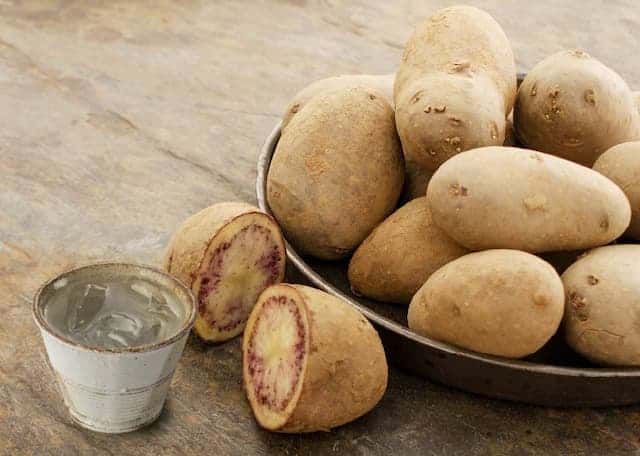
Potato shochu’s ingredient is mainly sweet potatoes. The sweet potato shochu is characterized by its unique sweetness and rich flavor. You can also enjoy various flavors depending on the variety that you use. For example, the most common one is “Kogane Sengan” with the feature of fruity and mellow mouthfeel. Moreover, you can also enjoy the light taste of shochu with “Joy White”, also one of the famous sweet potato shochu. There are different ways of drink it; however, we will mention it later in the next part.
Barley shochu

According to the name, you may know exactly the main raw ingredient of this shochu. This type is made from barley and has a refreshing and sharp taste. Mentioning this kind of barley, Nagasaki and Oita prefecture are the two places famous for producing barley shochu. “Iki shochu” has a history of over 400 years and famous for its unique aroma and sweetness. If you are interested in this barley shochu, please pay attention when choosing, especially do not forget to check the main ingredients and the area who produce it.
Rice shochu
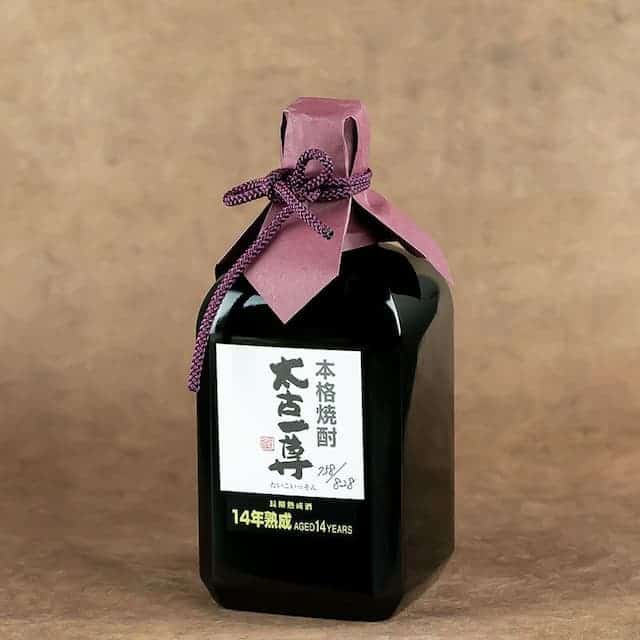
Rice is common not only for Japanese people but also Asian people. For this reason, the appearance of rice shochu is really familiar to Japanese and this kind of liquor is often compared to Japanese traditional sake. However, these two types of beverages have some major differences in producing process. Therefore, the flavor may be different too.
Rice shochu has a higher alcohol content than sake and has the gentle sweetness and refreshing taste. There are so many brands that sell rice shochu but we recommend you try “Kuma Shochu”. It is made from high-quality rice and pure natural water. The taste varies depending on the brand so there are plenty choices of brands from light to heavy!
Other types
Beside from the famous ingredients, some places use the unfamiliar and rare ingredients for producing shochu, making it become the popular local liquor in Japan.
- Tantakatan (é›é«˜èš): this is the famous shochu made from red shiso (perilla) from the city of Shiranukacho in Hokkaido. The alcohol content of it is 20 percent.
- Amami brown sugar shochu: made using a method called acoustic aging (a method of having shohchu age slowly in a cradle with music). Lento is made using brown sugar as an ingredient and is aged for about three months. The secret of this liquor lies on its deep richness and smooth texture.
- Awamori: is the oldest distilled in Japan, unique to Okinawa. With its old age, the story behind the development of it is really interesting. In addition, if you want to try awamori, enjoy it with Okinawa local dishes (especially Okinawa soba).
How to drink Shochu?
With various types of shochu, it is not only difficult to choose which one to try but also not easy at all to choose the way to drink it. How about trying some different ways of drink to find out your most favourite?
Neat
Drink shochu straight, or neat is a simple yet best traditional way of drinking shochu. When there is no ice or water, it would be easier for you to taste the original flavor and aroma of the liquor.
On the rocks
Another common way of drink shochu is to serve it with ice. The ice that people use in this drink is not the ordinary ice that we can find at home but the type that is made by slowly freezing high-purity water. Drink on the rocks can make a big different in taste than just drink straight. How about trying once?!
Mix with water
Pour shochu in a glass and slowly add water to it. Remember that in this way of drink, the order is the key: first is shochu and then the water. Soft mineral water is the best option for you.
How to make Japanese shochu?

Producing season
The fun fact about the producing process of shochu the period would differ depending on the variety. Taking sweet potato shochu as an example, it is generally said that the preparation period is from August to December.
Some people may think that the shochu breweries constantly produce shochu everyday throughout the year. Of course, some breweries do that but there are some who often prepare their products from August to December. Now, the question is why they have to choose that period of the year? The reason is that it is scheduled based on the harvest season of sweet potatoes, which are the raw ingredients. The period of harvesting potatoes are between August to November. Therefore, after picking up potatoes, they are immediately transfered to breweries and used as ingredients for shochu producing process.
Recently, some breweries started using frozen potatoes as they are much more convenient so the timing of each brewery would be different.
Producing process
In the producing process of shochu, first water and yeast are added to rice malt and fermented to make shubo. Then the makers will add materials such as rice, barley or potatoes and ferment to make moromi. After fermentation, the moromi is distilled in a single still and after an aging period, the shochu is born.
Atmospheric distillation is method that separate low boiling fraction of mixture so that the aroma and taste of the main ingredient remain strong. It is suitable for potato shochu and long-term aged sake. Other method is vacuum distillation which allows the components to be seperated easily by lowering the boiling point of a high boiling fraction. Since it boils at a lower temperature, it produces shochu with a refreshing flavor. You can see it in the producing process of barley shochu and rice shochu.
Restaurants
As one of the symbols of Japanese traditional liquor, you can easily find shochu everywhere in Japan. However, if you are wondering which one is the best place to enjoy Japanese traditional liquor, let us help you by introducing some famous restaurants.
HAVESPI
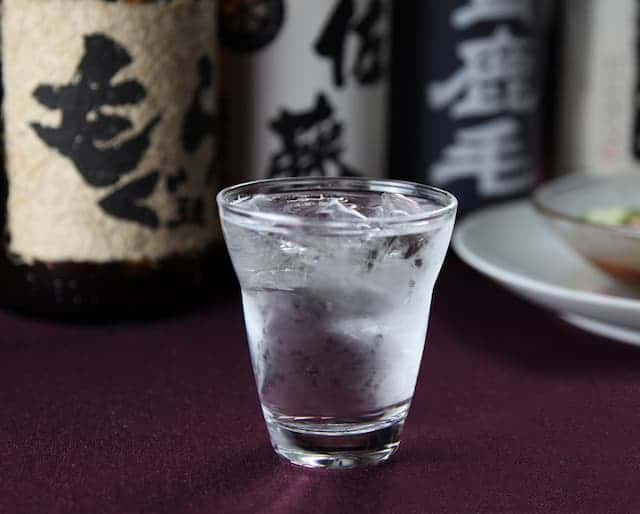
HAVESPI in Shinjuku is a place where you can drink 100 kinds of shochu from all over Japan. Apart from the orginal and famous one that you can easily find in shops, you can enjoy rare types of shochu such as lettuce, chestnuts or milk.
As there are so many types here, you may end up wondering which one to choose. If so, you should ask the staff for a recommendation. There is no dishes or rice for you to drink with but if you want to eat some, feel free to bring it by yourself.
Kagoshima Honke Kanoya
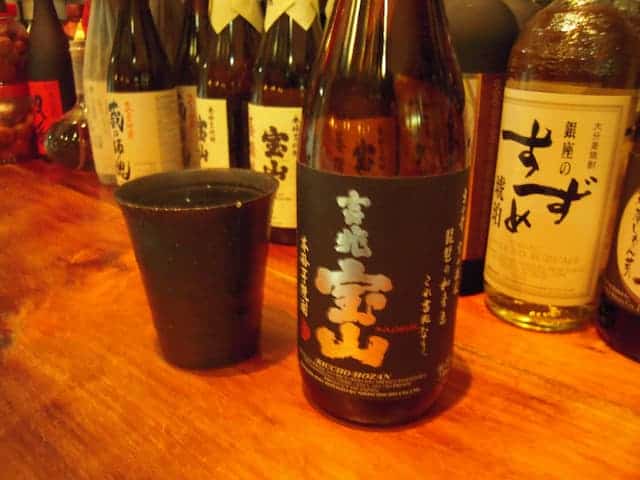
During the history of shochu, Kagoshima has an important role of spreading it all over Japan. Therefore, Kagoshima is also a famous place for many types of shochu. Honke Kanoya has 50 kinds, some are premium type that you can not find everywhere else.
One of the best things about this place is the food. The food served here is also Kagoshima dishes so there is no doubt that this could be the best combination for your meal.
Koan Tokyo (高庵 TOKYO)

Koan TOKYO, a hideaway shop near Shinjuku Sanchome Station, is a yakitori restaurant with an atmosphere like a shot bar. Yakitori is eaten with original miso. There is private room with a small number of people, so it’s popular with singles and couples. It’s wonderful that they have a good selection of Japanese sake as well as shochu. The most popular dish is white liver sashimi, and you can enjoy both sesame oil and wasabi with ponzu sauce. In addition, leba sashimi goes well with both shochu and sake. If you have a chance to go here, try these combinations!


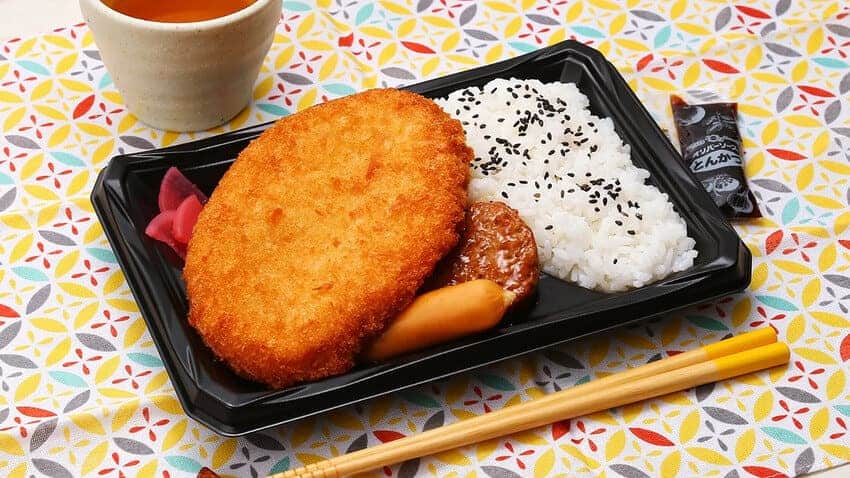



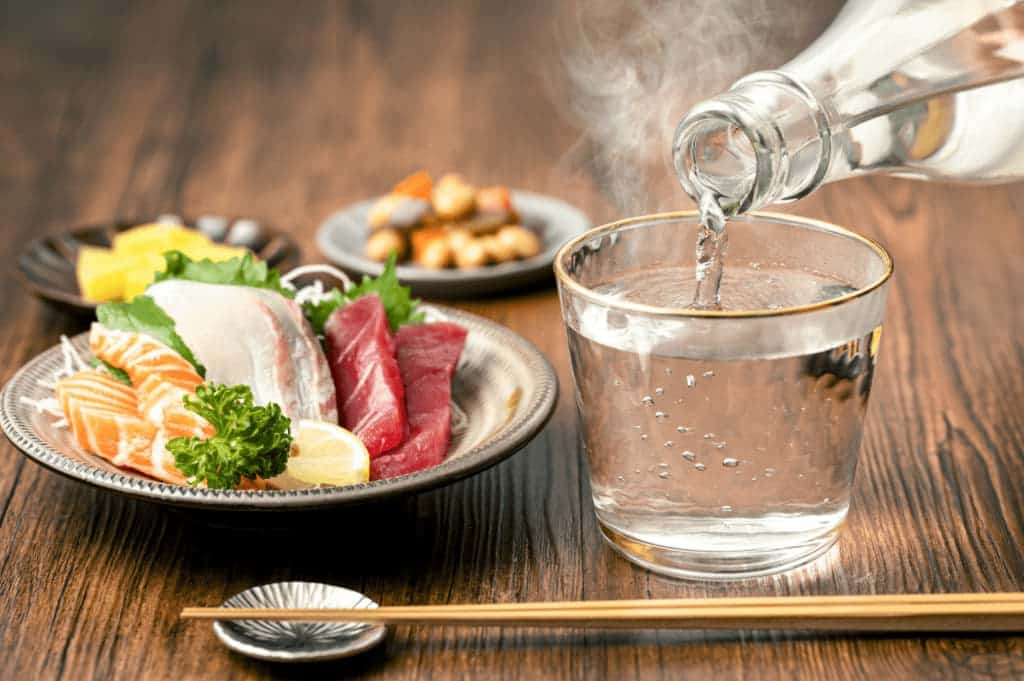
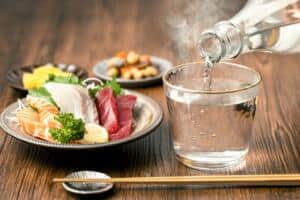
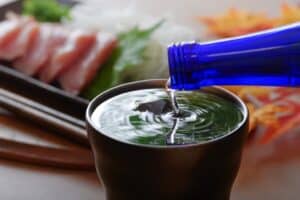
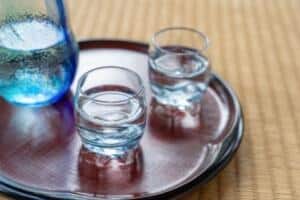

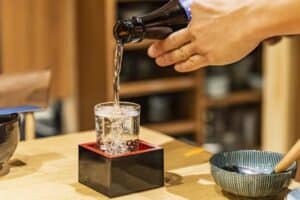
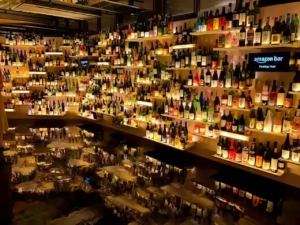
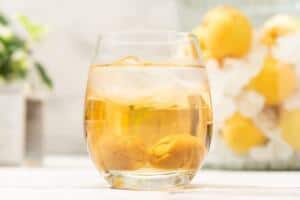
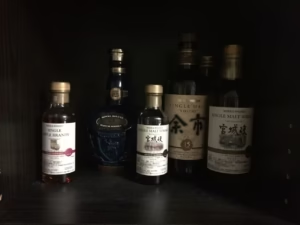

Comments